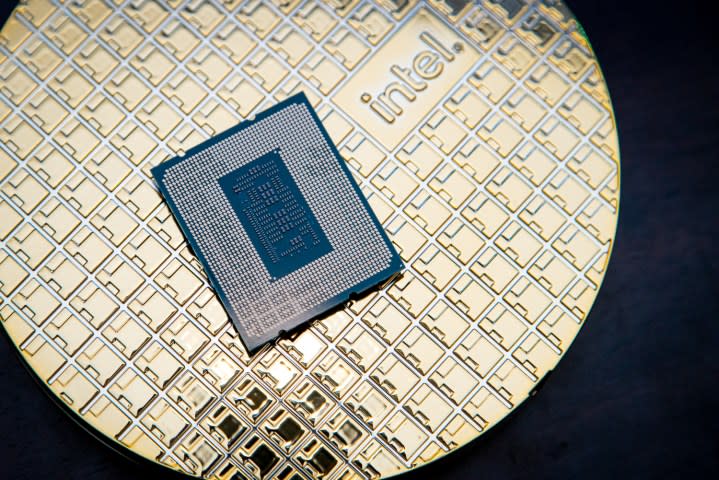Intel’s next-gen CPUs are leaving a big feature behind

Intel has confirmed that its next-gen Arrow Lake CPUs are arriving this year, but it looks like they’ll arrive missing a feature of the last few generations. Arrow Lake, and its corresponding 800-series chipset, is dropping support for DDR4 memory and moving exclusively to DDR5, according to a new leak shared on Chiphell.
The leaked slide shows that the CPU will instead use dual-channel DDR5. That’s hardly surprising, as we’ve suspected for a while that Intel would move onto DDR5 exclusively as soon as it switched sockets. The socket swap is coming with Arrow Lake, as Intel leaves behind the LGA 1700 socket we’ve seen for the past three generations and moves onto the new LGA 1851 socket.
Still, support for DDR4 and DDR5 memory has been a key feature for the last several generations of Intel CPUs. Unlike AMD’s Ryzen 7000 chips, Intel decided to support both memory standards to keep upgrades cheaper. Not only is DDR4 much cheaper than DDR5, the motherboards that support DDR4 are cheaper, as well. That made Intel’s 12th-, 13th-, and 14th-gen CPUs a cheaper upgrade compared to AMD, allowing builders to bring along their old memory.
Since the introduction of the Core i9-12900K — when Intel first introduced its dual memory standard support — prices for DDR5 have dropped significantly, however. A couple of years ago, you could easily spend $200 to $250 on a 32GB kit of DDR5 memory. Today, you can get 32GB for around $110, and that’s with fast speeds and RGB lighting.
Although there’s sure to be a select few who are sore about Intel dropping DDR4 support, it’s probably the best move. DDR4 motherboards among the last three generations haven’t been the most popular options, and with DDR5 dropping in price, it’s a perfect time for Intel to move on.
The leak also revealed some other key details about the platform. Most notably, it showed that the CPU will have a total of 20 dedicated PCIe 5.0 lanes — 16 for the GPU and four for storage. That joins an additional four lanes of PCIe 4.0. In the previous generation, Intel only offered up 16 PCIe 5.0 lanes, meaning you would need to choose between a GPU and storage. We don’t have any PCIe 5.0 GPUs yet, but it’s good to know that Arrow Lake will be set up to take advantage of them when they arrive.
Although Intel has said Arrow Lake CPUs are arriving this year, we don’t have an exact date yet. The next release on the docket comes from Intel’s Lunar Lake laptop CPUs, which are said to arrive in September. Intel will likely talk more about Arrow Lake at its Innovation event later this year, which takes place on September 24.


